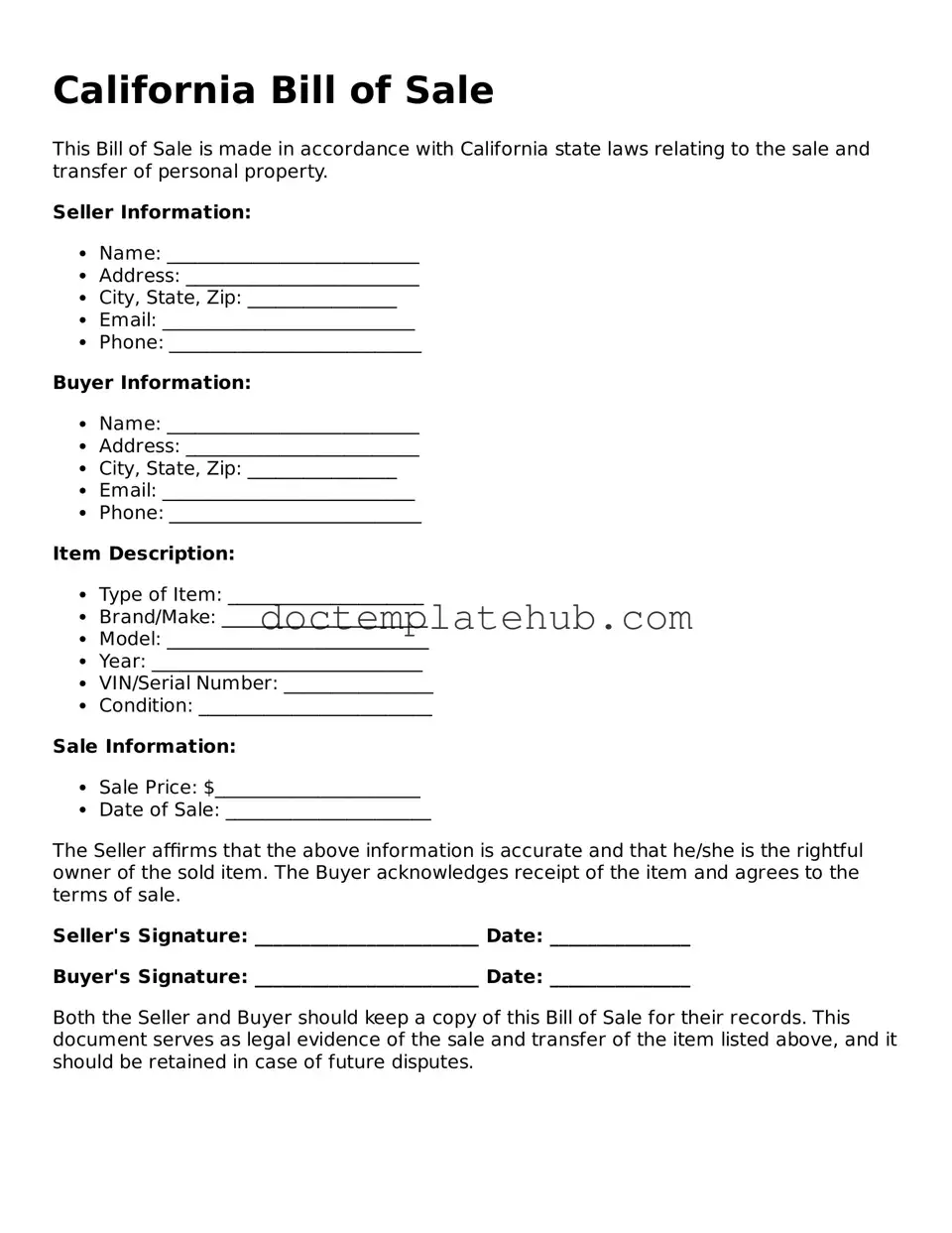What is a California Bill of Sale?
A California Bill of Sale is a legal document that serves as proof of the transfer of ownership of personal property from one person to another. It is commonly used for the sale of vehicles, boats, and other tangible goods. This document outlines the details of the transaction and helps protect both the buyer and the seller by providing a record of the sale.
Is a Bill of Sale required in California?
While a Bill of Sale is not legally required for all transactions in California, it is highly recommended. For vehicle sales, a Bill of Sale is often necessary to complete the registration process with the Department of Motor Vehicles (DMV). It can also serve as evidence in case of disputes over ownership or the terms of the sale.
What information should be included in a California Bill of Sale?
A California Bill of Sale should include several key pieces of information: the names and addresses of both the buyer and the seller, a description of the item being sold (including make, model, and VIN for vehicles), the purchase price, the date of the transaction, and any warranties or conditions related to the sale. Both parties should sign the document to validate it.
Can a Bill of Sale be handwritten?
Yes, a Bill of Sale can be handwritten as long as it contains all the necessary information and is signed by both parties. However, using a template or a printed form may help ensure that all required details are included and can make the document look more official.
Do I need a notary for a Bill of Sale in California?
A notary is not required for a Bill of Sale in California, but having the document notarized can add an extra layer of authenticity. It may also be beneficial if the buyer or seller needs to prove the legitimacy of the transaction in the future.
What if the item being sold is a vehicle?
When selling a vehicle, the Bill of Sale should include specific details such as the Vehicle Identification Number (VIN), the odometer reading at the time of sale, and the year, make, and model of the vehicle. Additionally, both parties should be aware of the need to complete the necessary paperwork with the DMV to transfer ownership officially.
How do I obtain a Bill of Sale form in California?
Bill of Sale forms can be easily obtained online from various legal websites or templates. Many local DMV offices also provide forms specifically for vehicle sales. It is important to choose a form that is appropriate for the type of item being sold.
What should I do with the Bill of Sale after the transaction?
After completing the transaction, both the buyer and the seller should keep a copy of the Bill of Sale for their records. This document can be useful for future reference, especially if there are any questions or disputes regarding the sale.
Can a Bill of Sale be used for gifts or trades?
Yes, a Bill of Sale can be used for gifts or trades, although it is typically associated with sales. In such cases, the document should clearly state that the item is being given as a gift or exchanged for another item. This can help clarify the nature of the transaction and avoid any misunderstandings.
